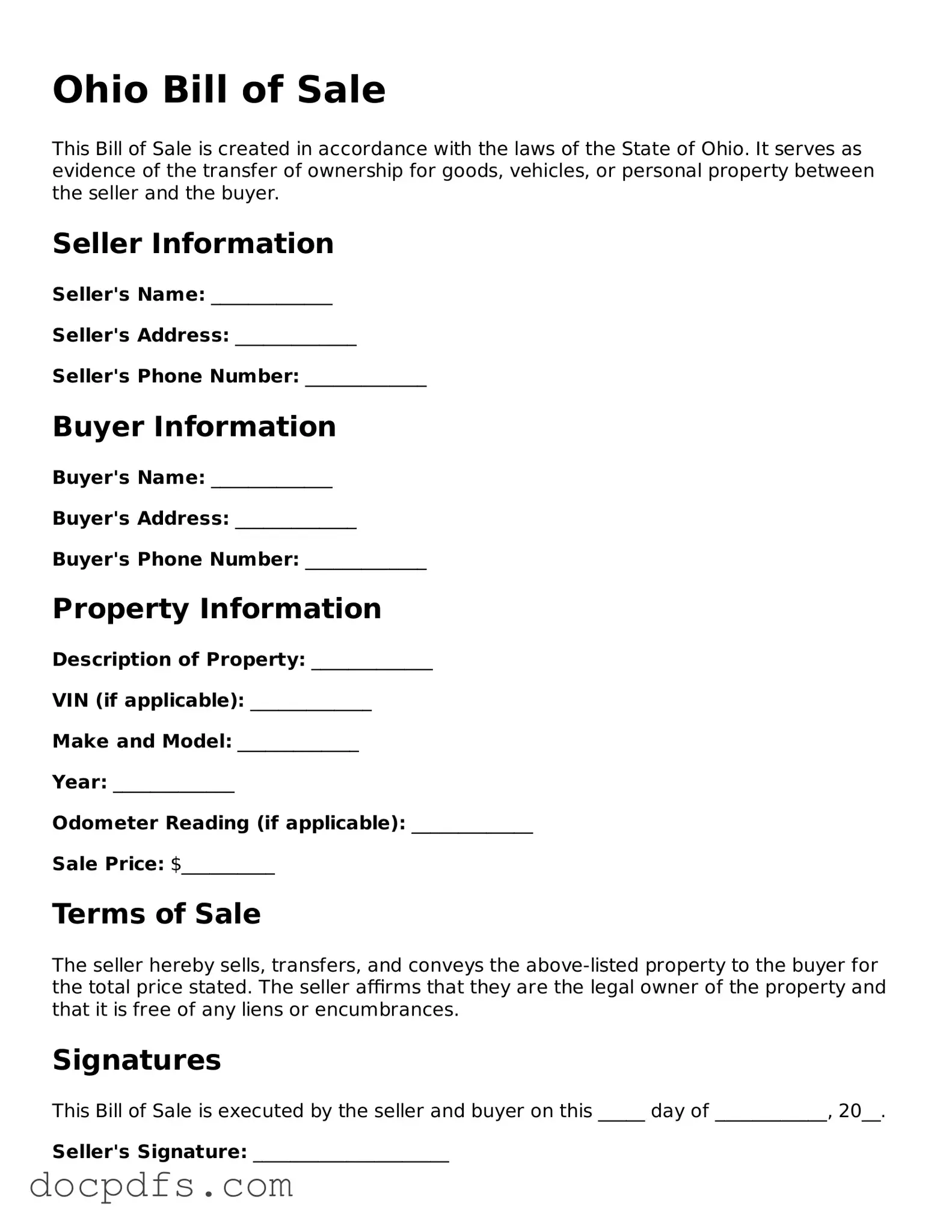Free Ohio Bill of Sale Form
The Ohio Bill of Sale form is a legal document that records the transfer of ownership of personal property from one party to another. This form provides essential details about the transaction, including the items sold, the sale price, and the identities of both the buyer and the seller. Using this document helps protect the rights of both parties involved in the sale.
Open Bill of Sale Editor Now
